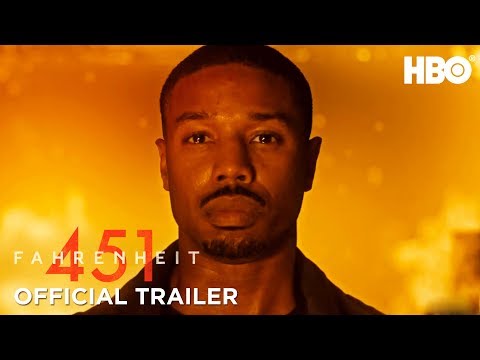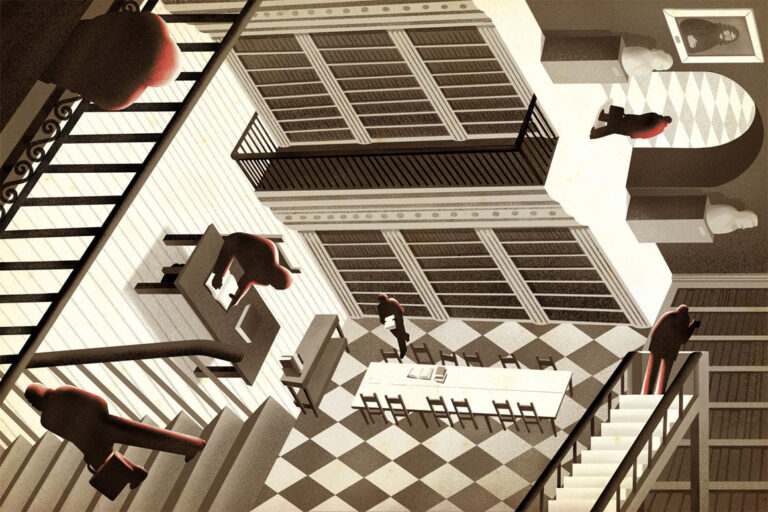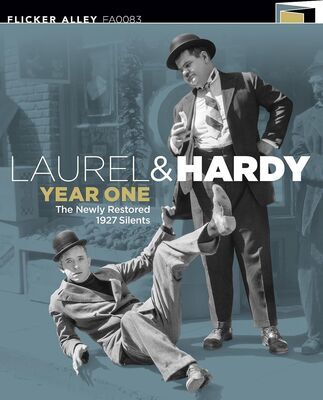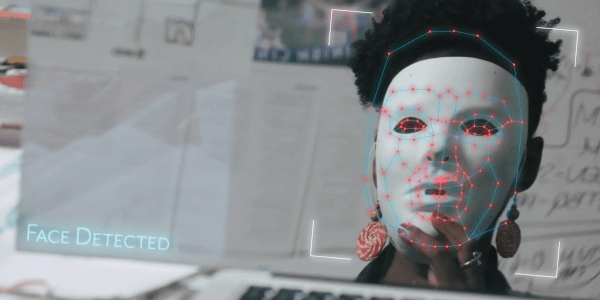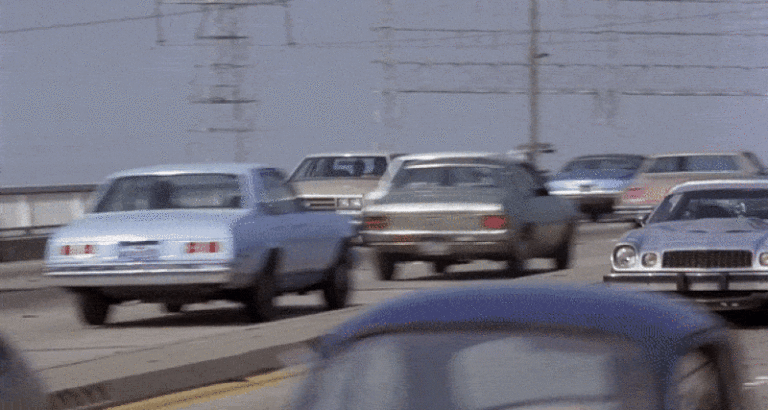Must-Read Movie Books for Your Library: From Kubrick to Hitchcock
In my undistinguished career as a filmmaker–consisting of a few Super-8 reels in my green days and a zero-budget sci-fi feature in my brown—I’ve had a lot of time between projects to read up on movies.
Film continues to be a source of endless fascination for the public. Celebrity is the shiniest bauble on the tree, but “making of” documentaries and works of criticism and analysis are of perennial interest.
Not a lot of people slow down when driving past a new building under construction, but everyone will slam on the brakes when passing a movie set.
Hollywood may be changed forever following the pandemic, so consider this a nostalgic look back at books that helped define what cinema used to be.
Kubrickian
When I was a kid, I went to the Bijou to see “2001: A Space Odyssey.” I was probably expecting something like Flash Gordon; instead I found Stanley Kubrick.
I came away from that traumatic experience realizing, in some vague way, that there was something more to the movies, something greater, something more transcendent than “Herbie the Love Bug.”
I haven’t been the same since.
So one of the first movie books I bought (at a bookstore, oddly enough) was “The Making of Kubrick’s 2001” (1970) by Jerome Agel. Long out of print, this chunky paperback was/is a collection of articles and essays around the development, premiere, and reception of “2001,” published shortly after its debut.
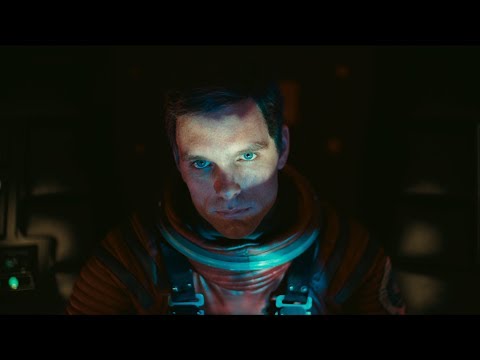
If you have a copy in your attic, you might find someone willing to shell out a hundred bucks for it. For the rest of us, there are much better books on the greatest movie ever made. Kubrickians are lucky now to have a great resource in “Space Odyssey: Stanley Kubrick, Arthur C. Clarke, and the Making of a Masterpiece” (2019).
This is the definitive narrative on the entire enterprise, from the vague stirrings in the heads of Kubrick and Clarke, through the fitful search for a story (and an ending!), through the production, to the boos and hisses of the earliest audiences.
Meticulously researched and narrated by Michael Benson, it is a trove of information and delight for devotees of 2001. Readable from cover to cover. A companion to Benson’s narrative might be Piers Bizony’s “The Making of Stanley Kubrick’s ‘2001: A Space Odyssey‘ (2015).”
An awkwardly formatted art-book emphasizing form over function (it is in the shape of the Monolith), the book’s raison d’etre is the many photographs of the sets, preproduction sketches and designs, as well as candid stills of Kubrick, technicians and actors at work.
The book comes with words, too, but I haven’t read any of them. This is the sort of book you gaze at more than read.
Every Kubrickian cult member is required to have a copy of “The Stanley Kubrick Archives” (2008) on his bookshelf. This is seven pounds of gorgeous photographs from Kubrick’s oeuvre, with minutiae covering his early documentaries through his career in Hollywood and beyond, including the unmade epic Napoleon.
RELATED: Yes, ‘Eyes Wide Shut’ Lives Up to Kubrick’s Legacy
The tome is too hefty to read in the bathtub, and the font is like Pica 4, so I haven’t read much of it. But once a year I like to haul it down from my bookshelf to look at the pictures.
Books are like old friends; sometimes it’s enough to know they live nearby, even if you do not talk to them every day.
The publishers of the “Archives” wooed the first thousand purchasers with a few frames from a genuine 70mm filmstrip of 2001.
Encountering “2001” as a young pip naturally led me to see more of this fellow Kubrick’s movies. I was not allowed as a ten-year-old to see “A Clockwork Orange” since it was rated X (for ua-violence), but I did buy a copy of Stanley Kubrick’s “A Clockwork Orange” (1971).
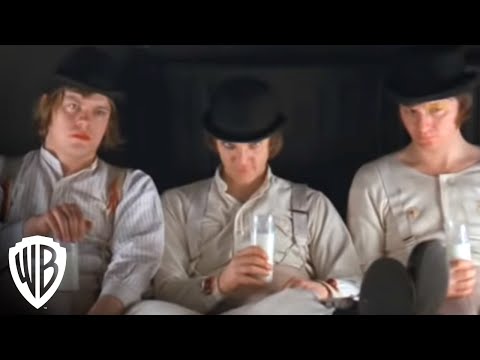
This book consisted of 800 black and white stills from the movie, as well as the dialogue, giving a cut-by-cut edit of the film. Way out of print, man.
Before moving on from Kubrick, a book that I have in fact read several times is “Eyes Wide Open: A Memoir of Stanley Kubrick” by Frederic Raphael (1999). Raphael was the screenwriter of Kubrick’s last film, “Eyes Wide Shut.”
This short, absorbing memoir describes Frederic’s involvement in the screenplay and his interactions with the enigmatic Sphinx that was Kubrick. From being summoned mysteriously by Warner Bros. through his cryptic conferences with Kubrick, the picture Frederic paints of the Maestro di Colore is of a paranoid, mysterious, perfectionist, gentle, even lonely, creative genius.
It is a small, rare glimpse into the private life and working habits of Kubrick–a man often portrayed as a cold and calculating HAL 9000.
Hitchcockian
Except for a few of the early silent pictures and oddball one-offs (“Jamaica Inn,” “Under Capricorn”), tramping through Hitchcock’s entire 50-plus films is a pleasant way to spend a rainy day.
A strange and fascinating man, Hitchcock’s life and career are worth studying for insight into the early British film industry, Hitchcock’s time in Hollywood and his late-in-the-day search for relevance.
Over a 50-year career, Hitchcock made many films in many different eras and wildly different styles, but there is undeniably a single consistent presence behind all of them, even the bad ones.
I’ve waded through two biographies of the man, but none of them stands out in my mind as indispensable. “Alfred Hitchcock: A Life in Darkness and Light” (2004) by Patrick McGilligan is the more recent, and it must have been readable since I read it from cover to cover.
Donald Spoto is an authority on Hitchcock, and his “Dark Side Of Genius: The Life Of Alfred Hitchcock” (1999) is said to be the definitive Hitch. Exhaustively researched, and, again, readable.
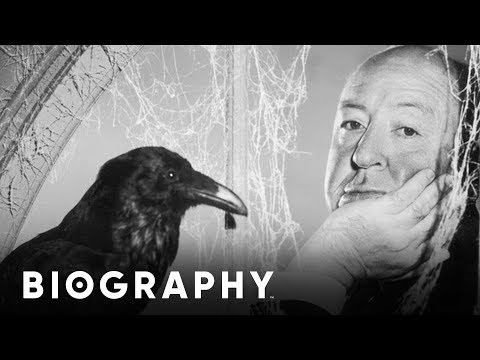
Spoto also wrote “The Art of Alfred Hitchcock: Fifty Years of His Motion Pictures” (1991), which contains short essays on each of his films and is a worthy compendium of his works. It’s good to have at your elbow as you work the remote.
Lastly, “Hitchcock/Truffaut” is a series of interviews from 1967 that touches on all of Hitchcock’s films to that date. It was later revised to include Hitchcock’s last films.
Illumined by Truffaut’s insight as a critic and a filmmaker himself, the interviews are priceless, always enlightening and always entertaining. It is a delight to spend time listening to two accomplished artists like Hitchcock and Truffaut having a conversation about their craft.
Odd Fish
David Lynch is one of the most brilliant creators of our day. The Da Vinci of strange dreams, Lynch is a writer, musician, composer, singer, photographer, painter, filmmaker–and “magnificent weirdo,” of course.
Lynch’s “Catching the Big Fish: Meditation, Consciousness, and Creativity” (2006) is a short work on creativity, the imagination, and Transcendental Meditation. For those who think Lynch is a dark and disturbed man (and he is), this book will surprise as a testament to the fact that Lynch is also one of the most cheerful, optimistic and happiest people on the planet.
Whether this frame of mind is due, as he asserts, to Transcendental Meditation or not is left as an exercise for the reader.
Regardless, it’s a pleasure to sit down with this creative powerhouse and listen to him chat about creativity, with occasional glances into his movies.
RELATED: ‘Twin Peaks’ at 30: The Essential Viewing Guide
In 2019 Lynch published his autobiography (of a sort). “Room to Dream” is as captivating as the man himself. For those who appreciate Lynch (strange to say, not everyone does), the book gives us a peek into Lynch’s life, art, thought and experiences.
Portions were alternately written by Lynch in the first person and by Kristine McKenna in the third.
For a deeper dive, “Lynch on Lynch” (2005) by Chris Rodley consists of interviews and background that give a more thorough examination of the madness behind Lynch’s films (and tv shows). The book was published before his last and possibly greatest film, “Inland Empire” (2006) and the latest insane chapters of “Twin Peaks: The Return” (2017).
“My Last Sigh: The Autobiography of Luis Bunuel” (1983) is the reminiscences of another deep-diver in the imagination. The book will be disappointing for those looking for gossip or insight from Bunuel’s many film sets.
Bunuel gives his filmmaking career short-shrift. Instead, the book is a charming ramble through the life and mind of a unique and pure artist. That said, Bunuel was a prankster all his life, and I couldn’t help feeling at certain points that the author might be pulling the wool over the reader’s eyes.
I usually skim the first “I Am Born” chapters of an autobiography, wherein the author takes us on a tour of his grammar school and peeks in on his granny darning socks by the fire. But Woody Allen is a very funny man, and in his autobiography, “Apropos of Nothing” (2020), Allen dwells on his days as a young ne’er-do-well for many pages of hilarity.
No skipping here.
Allen has lived a long, rich, and tempestuous life. He has made many movies, a few of which are masterpieces. Unfortunately (this seems to be a theme among books by filmmakers) he doesn’t exert a lot of energy on the mechanics of invention and film-set reminiscences.
The odd impression given by this memoir is that Allen is seriously dismissive of his talent, intelligence and worth. This will cheer the legion of Woody-haters, but for those who have admired the man through forty-plus movies, it is startling to hear him insist over and over he’s just a middle-brow mediocrity who wants only to watch basketball.
You may recall that this is the book the original publisher, the fortuitously named Hatchette, dumped because employees considered him guilty of allegations of child sexual abuse despite the lack of a conviction.
Allen mounts a lengthy and detailed defense of those charges here.
Oddly heavy on name-dropping, light on film insights and steeped in his trademark self-deprecation, “Apropos of Nothing” is a testament to the fact that Allen is still the same godless, nihilistic, red-diaper baby he always was, and very funny too.
RELATED: Will Woody Allen Movies Be Canceled Next?
Unless you hate him. “My Lunches with Orson: Conversations between Henry Jaglom and Orson Welles” (2014) is a brilliant conversation with another brilliant American.
Once or twice a week during the last years of his life, Welles lunched at famed Ma Maison with his friend and protégée Henry Jaglom. With Welles’ permission, Jaglom tape-recorded the lunches for posterity. Thirty years later, posterity dusted the tapes off, and with the help of Peter Biskind, transcribed and published them in this miraculous book.
Here is the classic, late-day Welles, a 300-pound enfant terrible even into his 70s. A Godzilla of opinion, Welles discourses with enormous passion on everything–on his history in Hollywood, on starlets and stars, on politics, food, literature and the ever-present threat of bankruptcy.
The sword of Damocles hangs over many of these lunches as Welles was in a never-ending battle to get his projects financed, often simply in order to “pay the grocery bill.”
RELATED: Orson Welles’ ‘Other Side’ Is Both Great and Self Indulgent
His despair ultimately turns to hostility and explodes in a notorious attack on Susan Smith of HBO when she joins them for lunch to hear his latest pitch, whereupon Welles unpacks his godlike wrath on her poor head.
Although tape-recorded, the machine was hidden away and seems to have been forgotten, so what we have here is the raw and candid conversation of a great conversationalist.
Many nuggets are worthy of framing. For instance, here is Orson’s take on Woody Allen (supra):
Welles: “I never could stand looking at Bette Davis, so I don’t want to see her act. I hate Woody Allen physically. I dislike that kind of man.”
Jaglom: “Have you met him?”
Welles: “Oh yes. I can hardly to talk to him. He has the Chaplin disease. That particular combination of arrogance and timidity sets my teeth on edge.”
Jaglom: “He’s not arrogant; he’s shy.”
Welles: “He is arrogant. Like all people with timid personalities, his arrogance is unlimited. Anybody who speaks quietly and shrivels up in company is unbelievably arrogant. He acts shy, but he’s not. He’s scared. He hates himself, and he loves himself — a very tense situation. It’s people like me who have to carry on and pretend to be modest.”
Delicious. I wish more filmmakers wrote their memoirs.
Francis Ford Coppola is one who really needs to get writing. His trajectory from the pinnacle of “The Godfather” films through the turmoil of “Apocalypse Now” and bankruptcy; to studio factory hackery; to, ultimately, the poorly-lit fringes of Hollywood–Coppola has many tales to tell.
“The Godfather Notebook Hardcover” (2016) contains Coppola’s copious notes on the greatest American epic.
“The Godfather Legacy” (1997) by Harlan Lebo provides a backlot look into the making of the films. It is bountiful in behind-the-scenes tidbits and trivia. In the end, however, Lebo’s book does not feel authoritative. It feels like third-hand eaves-dropping.
Robert Evans’ “The Kid Stays in the Picture” (1994) delivers an egocentric view into the making of “The Godfather” movies, as well as many other films of the period (i.e., “Chinatown”).
Evans was a celebrity-executive at Paramount, who brought the studio from the cliff’s edge to the summit. His memoir is pure juicy Hollywood gossip. It comes recommended with the caveat (from Coppola, among others) that Evans was an outrageous Hollywood fabulist and should never be trusted as the final word on anything.
Still, taken with a grain of salt, it’s great ride.
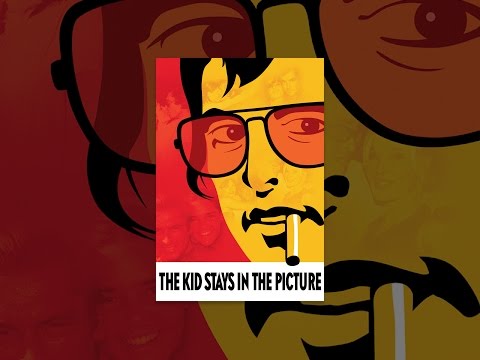
Speaking of “Chinatown,” Sam Wasson’s “The Big Goodbye: Chinatown and the Last Years of Hollywood” (2020) is a narrative of the making of Chinatown in particular, and the unmaking of Hollywood in general.
The sweep of that big broom did not make a convincing impression on me, but with a stellar cast–Polanski, Sharon Tate, the Manson family, Jack Nicholson, Fay Dunaway, Robert Towne–the book captures the film and the zeitgeist of Hollywood in the 1970s.
Noteworthy for its insights into poetic filmmaking is Andrei Tarkovsky’s “Sculpting in Time” (1989). Tarkovsky was a poet in celluloid, and like his films, this work is a slow burn, a meditation on time and transcendent cinema.
Many will snooze through it–like his films–but if, like me, you cannot shake a few of Tarkovsky’s scenes or images, if they keep haunting you years later, little fragments you cannot forget.
RELATED: Five Pop Culture Books You Shouldn’t Miss
It’s unlike so many movies today, which can be swallowed whole, digested, and forgotten like last year’s lunch.
I wish I could recommend David Mamet’s “On Directing Film,” but I cannot. Mamet is an American treasure: dramatist, novelist, screenwriter, and director. He is far smarter than I, so the bewildering method behind his book on directing probably went over my head.
Maybe you will have better luck with it.
But I can recommend whole-heartedly his “Bambi vs. Godzilla,” a collection of brutal essays on the movie biz from a writer wielding a baseball bat, happy to crack heads and dole out black-eyes where needed.
Critical
One measure of good movie criticism is that, regardless of how bad or good the film under the microscope may be, the critique will be eminently re readable in and of itself. It also will reveal something important about the state of the art.
An avid film fan all his life, Graham Greene spent several years sitting in the dark watching movies and reporting on them weekly for The Spectator. His gig as a movie reviewer covered a short period from 1935-1941 and included both the best and worst of the Golden Age of Hollywood.
His film writings are bundled together in “The Graham Greene Film Reader” (2000). This huge collection comprises not only hundreds of film reviews from the period, but many essays and articles on cinema that he wrote throughout his life. Plus, the tome offers a number of Greene’s scenarios, film treatments and notes.
Even his notices on pictures long forgotten (if they were ever remembered longer than a week by the public) are worth reading again and again, like good literature, for the sheer pleasure of his words.
This is over 700 pages of fine writing on the cinema by one of the most accomplished writers of the 20th Century.

Pauline Kael contributed many rambling pieces on the best and worst Hollywood churned out in the ‘70s, ’80s and ‘90s. Of course, Kael–like so many of our cultural Over-lizards–was a smug bubblehead who gazed down on us in the hinterlands as an alien race to be subjugated.
Nevertheless, her film appraisals are welcome in my house.
Always bitchy in a Berkeley Sophomore kind of way, a contrarian who mistook contrariness for independent thought (2001 “a monumentally unimaginative movie”!), nevertheless, Kael’s criticism illuminates the works and the times.
I have various copies of her various books, but “The Age of Movies: Selected Writings of Pauline Kael” (2016) captures her best.
I am a part-time student of the Golden Age of Hollywood, especially the romantic comedies of the 1930s. The sudden rise and shocking fall of this high art form continues to be a mystery. The great Hollywood comedies bloomed during the Great Depression and faded during the war years. 1943’s “The More the Merrier” was screwball’s last, glorious stand.
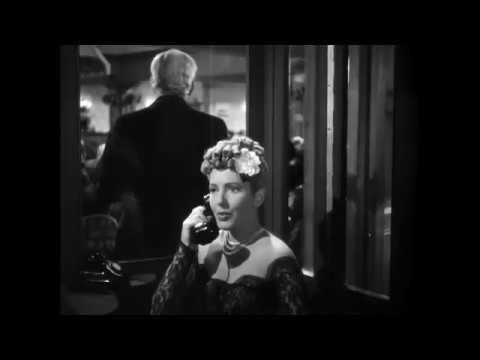
This is large, difficult terrain, but it’s clear something happened after the war. Something was lost.
Just as it was hitting its stride, Hollywood comedy stumbled.
Preston Sturges peaked in the war years: he made a handful of inimitable comedies – “The Lady Eve” (1941), “Sullivan’s Travels” (1941), “Palm Beach Story” (1942) — and then his talent went dark like a light switched off.
After World War II, even Frank Capra could not re-capture the lightning of “It Happened One Night” (1934) and “Mr. Deeds Goes to Town” (1936). Except for “It’s A Wonderful Life” (1946)–by no means a romantic comedy–his post war films are feeble shadows.
Howard Hawks perfected screwball with Twentieth Century (1934), “Bringing Up Baby” (1938), and “His Girl Friday” (1940)–but 1949’s “I was a Male War Bride” and 1952’s “Monkey Business” pale in comparison–even with the presence of Cary Grant.
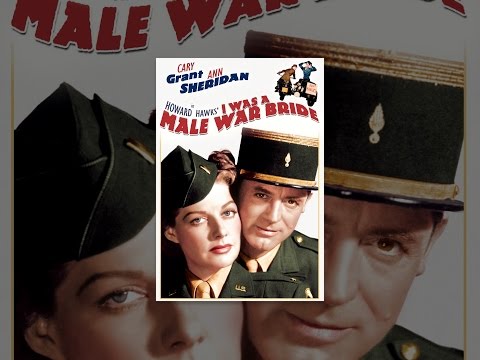
After the war, a darkness crept into comedy–sour irony exemplified by “Sunset Boulevard” (1950)–a black comedy that is light-years from the joie de-vivre of “Trouble in Paradise” (1932). How in such a short period of time did so many diamond-like movies suddenly flourish? And why did the magic just as suddenly fail, never to be recovered?
For answers to this enigma, I turn to James Harvey’s “Romantic Comedy in Hollywood: From Lubitsch to Sturges” (1998). Harvey dissects hundreds of films of the period in great detail, trying to find out what made them tick. It is exhaustively researched and a sound work of analysis.
His charming interview from the 1970s with Irene Dunne alone is worth the price of admission. But, in the end, Harvey has no more idea than my dog does how the rose bloomed and faded, only the usual suspicions.
Like the rise and fall of Greek Tragedy or of Rock ‘n’ Roll, it remains one of the great mysteries of the age.
David Thomson is a critic and historian par excellence. I have consumed many of his words, sometimes with distaste, more often with delight. Thomson has grown increasingly cranky in his most recent books.
Still, the man can write about the movies like no one else.
But, caveat lector, like so many aging talents, Thomson feels it necessary to lash out at the captive reader with the stick of his politics. In writers and artists, this stooping to politics, this weak will to power, is always a symptom of the failing of the light.
Nevertheless!–you will not find a more informed or thoughtful writer on the movies. There is something worthwhile in every book he has written (dozens). Here are a few of my favorites.
I’ve breezed through Thomson’s “The Whole Equation: A History of Hollywood” (2006) no less than three times. Part history, part commentary, part meditation on the magic of the old studio system, it is a dreamy ride through the hills of Hollywood, past and present.
It ranks high on my shelf as the best book on Hollywood and the movies, in texture and tone, if not substance.
“The Big Screen: The Story of the Movies” (2013) is a more formal approach to the history of the movies than a meandering bus tour. Top-notch with nary a dry passage.
Thomson’s classic “The New Biographical Dictionary of Film” is now in its sixth edition, but for a reference book I prefer “Have You Seen . . . ?” (2008), which is Thomson’s take on a 1,000 movies you must see before you die.
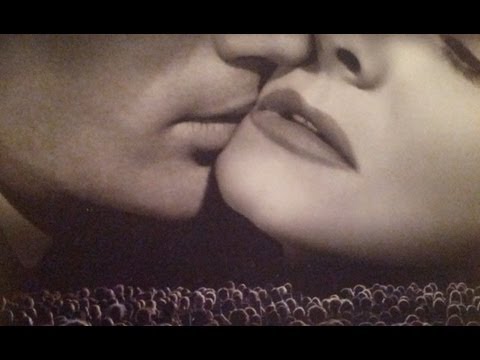
Finally, for laughs, if you can dig up a copy of one of “The Golden Turkey Awards” books, you will be rewarded with a hilarious assessment of the worst of Hollywood (through the 1990’s–so a massive revision is in order).
Harry Medved and his better-known brother, Michael, slogged through hundreds of stinkers and memorialized the very worst of the worst in several volumes: “The Golden Turkey Awards,” “Son of the Golden Turkey Awards,” “The Fifty Worst Movies of All Time” and “The Hollywood Hall of Shame.”
With hysterical mockery that will leave you gasping for air, the authors expose the most grotesque debacles from the Hollywood sewers. Like the inestimable “Thing With Two Heads” (1972) — yet another Hollywood hymn to racial healing starring Rosey Grier and the fake head of Ray Milland.
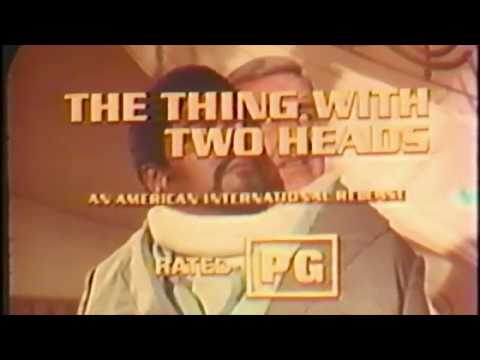
Any one of these books will put you off the movies forever. And just in time, since the Hollywood of yesteryear is no more.
——————–
Jeff Thelen is the creative head of Quixotic Arts, a film outfit in Atlanta. In 2017, Jeff wrote, produced, and directed “Panopticon,” a zero-budget science-fiction feature film available on Amazon Prime. He is currently working on his next zero-budget feature, “The Flayed Lord.” For more information, please visit www.QuixoticArts.com.
The post Must-Read Movie Books for Your Library: From Kubrick to Hitchcock appeared first on Hollywood in Toto.
